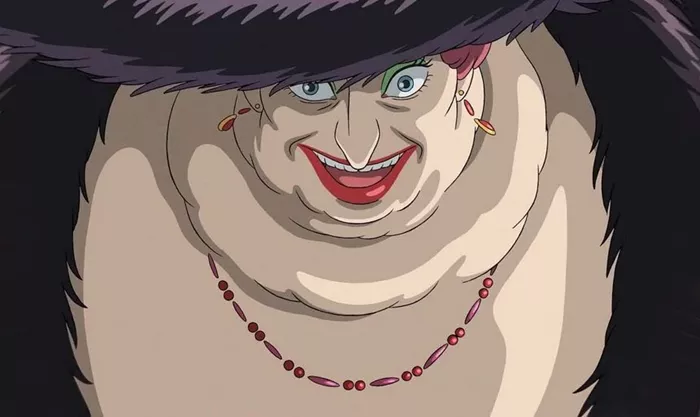In Hayao Miyazaki’s acclaimed film “Howl’s Moving Castle,” based on Diana Wynne Jones’s novel of the same name, the enigmatic character of the Witch of the Waste plays a pivotal role. Her motivations and feelings towards the protagonist, Howl, are complex and multifaceted. This article explores whether the Witch of the Waste truly loved Howl by examining her actions, motivations, and character development in both the film and the novel.
Understanding the Witch of the Waste
The Witch of the Waste is a powerful sorceress whose influence extends across the story’s magical world. Her obsession with Howl drives much of the plot, leading to numerous conflicts and revelations.
Background and Abilities
The Witch of the Waste is depicted as a formidable adversary with a deep understanding of magic.
Magical Powers
Shape-shifting: She can change her appearance at will.
Curses and Enchantments: She casts powerful spells, including the curse on Sophie.
Manipulation: She uses her magic to control and deceive others.
Role in the Story
Her role as an antagonist is crucial to the development of the main characters and the progression of the plot.
Initial Conflict
Curse on Sophie: The Witch curses Sophie to transform her into an old woman, setting her on a journey that leads to Howl.
Pursuit of Howl: Her relentless pursuit of Howl creates tension and conflict.
The Witch’s Obsession with Howl
The Witch of the Waste’s fixation on Howl is central to understanding her feelings towards him.
Initial Attraction
Her interest in Howl appears to be driven by his magical prowess and physical appearance.
Infatuation with Howl’s Beauty
Desire for Youth: She covets Howl’s youthful appearance and magical talent.
Jealousy and Envy: Her feelings are tinged with envy, as she desires what Howl possesses.
The Nature of Her Obsession
The Witch’s obsession goes beyond mere attraction, hinting at deeper, more complex emotions.
Possessiveness
Control and Domination: She seeks to control Howl and possess his heart.
Manipulative Tactics: Her actions are driven by a need to dominate and manipulate.
Actions Driven by Obsession
The Witch of the Waste’s actions throughout the story provide insight into her feelings for Howl.
Casting the Curse on Sophie
Her decision to curse Sophie stems from jealousy and a desire to eliminate perceived competition.
Motivations Behind the Curse
Eliminating Rivals: She sees Sophie as a threat to her pursuit of Howl.
Exerting Power: The curse is a demonstration of her magical abilities and control.
See Also: What Happened to Nidai Kitetsu?
Pursuit and Confrontations with Howl
Her relentless pursuit of Howl leads to several confrontations, showcasing her determination.
Key Confrontations
Encounter at the Castle: She infiltrates Howl’s moving castle, showcasing her persistence.
Battle of Wits: Their interactions are marked by strategic maneuvers and displays of power.
Analyzing Her Feelings for Howl
To determine whether the Witch of the Waste truly loved Howl, it’s essential to dissect her actions and underlying motivations.
Love vs. Obsession
The distinction between love and obsession is critical in understanding her feelings.
Characteristics of Obsession
Selfish Desires: Her actions are driven by self-interest and a desire for power.
Lack of Empathy: She shows little concern for Howl’s well-being or happiness.
Characteristics of Love
Selflessness: True love involves caring for the other person’s needs and happiness.
Empathy and Understanding: Genuine love is marked by a deep understanding and empathy for the other person.
The Witch’s Transformation
As the story progresses, the Witch of the Waste undergoes significant changes, shedding light on her true feelings.
Loss of Power
Stripped of Magic: Her encounter with Madame Suliman results in the loss of her magical abilities.
Humanization: Without her powers, she becomes more human and vulnerable.
Shift in Behavior
Newfound Vulnerability: Her transformation leads to a change in her behavior and attitude towards others.
Genuine Care for Howl: She begins to show signs of genuine care and concern for Howl’s well-being.
The Film vs. the Novel
The portrayal of the Witch of the Waste differs between Miyazaki’s film and Jones’s novel, offering varying perspectives on her feelings for Howl.
The Film’s Interpretation
In Miyazaki’s adaptation, the Witch’s character is more nuanced, with a focus on her transformation and redemption.
Character Development
Redemption Arc: The film portrays her as a more sympathetic character, capable of change and redemption.
Complex Emotions: Her feelings for Howl are depicted as a mix of obsession, envy, and eventual genuine care.
The Novel’s Interpretation
Jones’s novel presents the Witch as a more straightforward antagonist, driven primarily by power and control.
Motivations and Actions
Power-Hungry Antagonist: The Witch is depicted as a classic villain, driven by a desire for power and control.
Lack of Redemption: Unlike the film, the novel does not offer a significant redemption arc for her character.
Conclusion
The question of whether the Witch of the Waste loved Howl is complex, with answers varying based on the interpretation of her actions and character development. In both the film and the novel, her initial feelings towards Howl are driven by obsession and a desire for power. However, Miyazaki’s film offers a more nuanced portrayal, suggesting that her feelings may evolve into genuine care and concern.
Ultimately, the Witch of the Waste’s relationship with Howl can be seen as a journey from obsession to a more humanized form of affection. Her character serves as a compelling exploration of the fine line between love and obsession, highlighting the transformative power of vulnerability and empathy.

